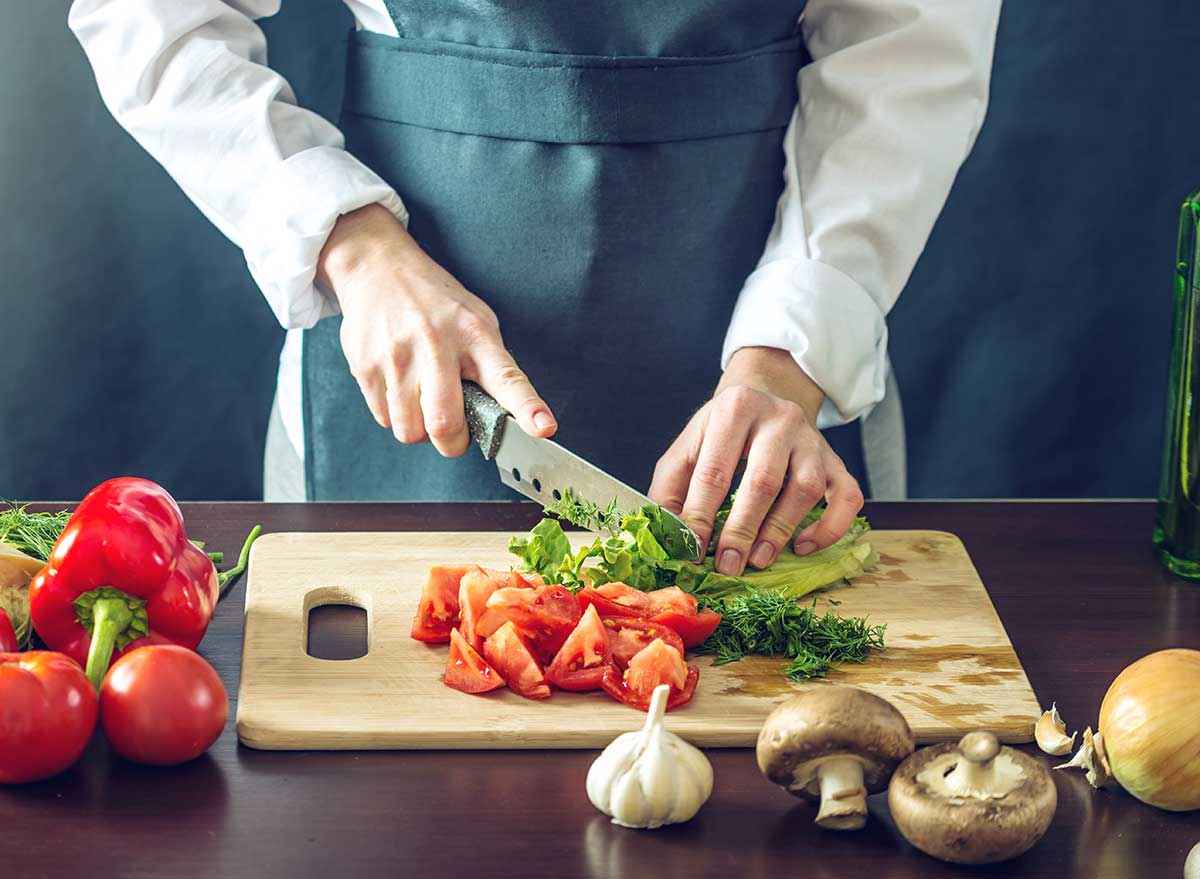Shocking Truth: What Cutting Board Should You Use for Meat?
Written By James Morgan
When it comes to barbecuing, one of the most essential tools in your kitchen is the cutting board. But what cutting board should you use for meat? This is a question that many barbecue enthusiasts ponder. The answer is more critical than you might think, as the cutting board you choose can affect not only the hygiene and safety of your meal but also the quality of your meat preparation.
In this comprehensive guide, we'll delve into the world of cutting boards, exploring the different types available, their pros and cons, and how to maintain them to ensure a safe and enjoyable barbecuing experience. Whether you are a seasoned pitmaster or a backyard grilling enthusiast, understanding the best cutting board for meat is vital.

Why Your Choice of Cutting Board Matters
Your cutting board is a fundamental part of your food preparation process. It's a surface where you chop, slice, and dice your meats, and it plays a crucial role in food safety. Using the wrong cutting board can lead to cross-contamination, dull your knives, and even affect the taste and texture of your meat.
Meat juices can harbor harmful bacteria such as Salmonella and E. coli. If these bacteria transfer from the cutting board to other foods or surfaces, it can lead to foodborne illnesses. Therefore, selecting the right cutting board and maintaining it properly is essential for any barbecue enthusiast.
:max_bytes(150000):strip_icc()/prevent-cutting-board-slipping-1123-c9837c7f958745b792c2b115c7d7bccd.jpg)
Types of Cutting Boards Suitable for Meat
Wooden Cutting Boards
Wooden cutting boards are a popular choice among barbecue enthusiasts for several reasons:
- Durability: Wood is a durable material that can withstand heavy chopping and cutting.
- Knife-friendly: Wooden boards are gentle on knives, preventing them from dulling quickly.
- Natural antibacterial properties: Some woods, such as maple and walnut, have natural antibacterial properties that help reduce the risk of contamination.
However, wooden cutting boards require proper maintenance. They need to be regularly oiled to prevent drying and cracking. You can learn more about why you should oil a cutting board.
Plastic Cutting Boards
Plastic cutting boards are another common choice and offer some unique benefits:
- Easy to clean: Plastic boards can be washed in a dishwasher, making them very easy to clean and sanitize.
- Non-porous: Plastic does not absorb meat juices, reducing the risk of bacterial contamination.
- Affordable: Plastic cutting boards are generally more affordable than wooden ones.
However, plastic boards can develop deep knife grooves over time, which can harbor bacteria. It's essential to replace them once they become overly scored.

Maintaining Your Cutting Board
Regardless of the type of cutting board you choose, proper maintenance is crucial to ensure its longevity and hygiene. Here are some tips for maintaining your cutting boards:
- Cleaning: Immediately after use, clean your cutting boards with hot, soapy water. For wooden boards, avoid soaking them in water as it can cause warping. Check out this guide on how to clean a wooden cutting board with vinegar.
- Disinfecting: For plastic boards, regular dishwasher cycles or a bleach solution can help disinfect them. For wooden boards, a mixture of vinegar and water or a specialized wood cleaner works well.
- Oiling: Wooden boards need regular oiling to prevent them from drying out. Food-safe mineral oil is a popular choice for this task. Learn more about why oiling your cutting board is essential.
- Storage: Store your cutting boards in a dry, well-ventilated area to prevent moisture build-up and mold growth.

Additional Food Safety Tips
In addition to choosing the right cutting board and maintaining it properly, here are some additional food safety tips for handling meat:
- Separate cutting boards: Use separate cutting boards for raw meat and other foods to prevent cross-contamination.
- Thorough cleaning: After prepping meat, thoroughly clean all surfaces, utensils, and cutting boards before using them for other foods.
- Handwashing: Always wash your hands with soap and water before and after handling raw meat.
- Proper storage: Store raw meat in leak-proof containers at the bottom of the refrigerator to prevent juices from dripping onto other foods.
Conclusion
Choosing the right cutting board for meat is a crucial decision for any barbecue enthusiast. Factors such as material, maintenance, and food safety all play a role in determining the best option for your needs. Wooden and plastic cutting boards each have their benefits and drawbacks, and understanding these can help you make an informed choice.
Remember, maintaining your cutting board is just as important as selecting the right one. Proper cleaning, disinfecting, and oiling will ensure your cutting board remains a safe and effective tool in your barbecuing arsenal.
For more insights and tips on cutting board maintenance, check out this guide on how to choose the right cutting board.
FAQs
Can I use the same cutting board for meat and vegetables?
It's not recommended to use the same cutting board for both meat and vegetables. Using separate cutting boards for raw meat and other foods helps prevent cross-contamination and ensures a safer cooking environment.
How often should I replace my cutting board?
The frequency of replacement depends on the material and wear of your cutting board. Plastic boards should be replaced once they develop deep grooves that are difficult to clean. Wooden boards can last much longer if properly maintained, but they should be replaced if they develop cracks or become excessively worn.
Is it safe to use a wooden cutting board for raw meat?
Yes, wooden cutting boards can be safely used for raw meat as long as they are properly cleaned and maintained. Their natural antibacterial properties, combined with regular oiling and disinfecting, make them a great option for meat preparation.
For more detailed food safety information, visit Cutting Board Safety.
As an Amazon Associate, I earn from qualifying purchases.



